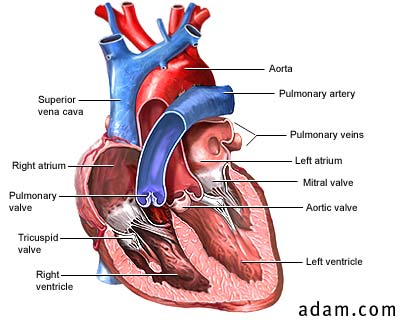pulmonary artery

Superficial dissection of the back of the neck.
The pulmonary artery is a large artery originating from the superior surface of right ventricle and carrying deoxygenated blood from the heart to the lungs. The pulmonary artery is the exception to the rule that arteries carry oxygenated blood from the heart to other parts of the body.
The pulmonary trunk (pulmonary artery or main pulmonary artery) is approximately 5 centimeters (2 inches) in length and 3 centimeters (1.2 inches) in diameter. It branches into two pulmonary arteries (left and right), which deliver deoxygenated blood to the corresponding lung.
The right pulmonary artery commences below the arch of the aorta, and runs to the right and slightly downward to reach the hilum of the right lung. In its course, it passes behind the ascending aorta and the superior vena cava, and in front of the esophagus and the stem of the right bronchus. Near the lung it gives off a large branch which accompanies the eparterial bronchus.
The left pulmonary artery runs to the left and backward, across the front of the descending aorta and the left bronchus, to the hilum of the left lung.


